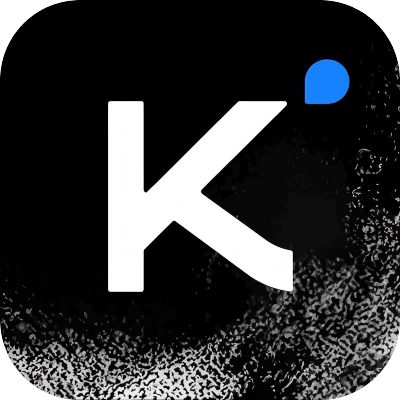Gemma Open Models by Google
Alternatives
0 PH launches analyzed!

Gemma Open Models by Google
new state-of-the-art open models
42
Problem
Traditional models in machine learning and AI are often heavyweight, requiring significant computational resources which limits accessibility for smaller organizations or individual developers.
Solution
Gemma Open Models by Google is a family of lightweight, state-of-the-art open models, offering accessible, efficient solutions built from advanced research and technology akin to the Gemini models.
Customers
Small to mid-sized tech companies, independent coders, and researchers in the field of AI and machine learning.
Alternatives
Unique Features
State-of-the-art performance while being lightweight, free access to cutting-edge technology, openness for customization and improvement by the community.
User Comments
Highly accessible for smaller projects
Significantly reduces computational costs
Facilitates innovation in AI applications
Community-driven improvements
Admiration for Google's commitment to open-source
Traction
The specific traction details such as number of users, revenue, or financing were not provided.
Market Size
$126.5 billion (estimated global AI market size by 2025)
Problem
Users needing advanced large language models (LLMs) find that the capabilities they require are often restricted to closed model APIs, leading to limitations in accessibility and adaptability for both the open community and enterprises.
Solution
DBRX presents as an open LLM that establishes a new benchmark across standard tests for open LLMs. It extends capabilities to the open community and enterprises, which were once only available through closed model APIs.
Customers
The primary users are likely to be developers, data scientists, and enterprises engaged in building or integrating LLM technology into their services or products.
Alternatives
View all DBRX alternatives →
Unique Features
DBRX's unique selling point is its establishment of a new state-of-the-art for open LLMs, offering advanced capabilities that bridge the gap between open communities and proprietary, closed model APIs.
User Comments
Cannot provide insights due to lack of direct access to user comments.
Cannot provide insights due to lack of direct access to user comments.
Cannot provide insights due to lack of direct access to user comments.
Cannot provide insights due to lack of direct access to user comments.
Cannot provide insights due to lack of direct access to user comments.
Traction
Cannot provide specific data on traction due to lack of access to up-to-date metrics or user reviews regarding adoption rates, version updates, revenue, or financing details.
Market Size
Cannot accurately extrapolate specific market size data for DBRX without comparable products or industry reports.

OpenAI Open Models
gpt-oss-120b and gpt-oss-20b open-weight language models
373
Problem
Users rely on proprietary language models with restricted licenses, leading to limited customization, high costs, and dependency on vendor-specific ecosystems.
Solution
An open-weight AI model (gpt-oss-120b/gpt-oss-20b) enabling developers to customize, deploy, and scale models for agentic tasks and commercial use under Apache 2.0.
Customers
AI developers, researchers, and startups needing flexible, high-performance LLMs for tailored enterprise applications.
Alternatives
View all OpenAI Open Models alternatives →
Unique Features
Apache 2.0 license for unrestricted commercial use, open-weight architecture for fine-tuning, and optimized for agentic workflows.
User Comments
Enables cost-effective model customization
Apache license simplifies commercial adoption
Supports complex reasoning tasks
Requires technical expertise to deploy
Limited ecosystem compared to proprietary models
Traction
No explicit metrics provided; positioned as competitive open-source alternatives to GPT-4.
Market Size
The global generative AI market is projected to reach $126 billion by 2025 (Statista).
Problem
Developers and researchers have struggled with access to lightweight, state-of-the-art large language models (LLMs) that can be freely used and modified for various purposes. Traditional LLMs can be resource-intensive and not easily customizable.
Solution
Gemma is a family of lightweight, open-source large language models (LLMs) optimized for efficiency and built from the same research and technology as the Gemini models. These models are designed to be freely used and modified by developers and researchers.
Customers
Developers, researchers, and organizations focused on leveraging AI technology for various applications, such as natural language processing, automated content generation, and data analysis.
Alternatives
View all Gemma alternatives →
Unique Features
Gemma stands out for being lightweight, open-source, and built upon Google's advanced Gemini models research, making it highly efficient and customizable for different use cases.
User Comments
Users appreciate the openness and flexibility.
Praise for Gemma's high efficiency and performance.
Positive feedback on the ease of integration into various projects.
Acknowledgment of its potential to advance research.
Appreciation for Google's initiative in making such technology accessible.
Traction
Specific traction details unavailable, but being open-source and backed by Google's technology suggests significant potential for widespread adoption and contribution.
Market Size
The global AI market size is expected to reach $190.61 billion by 2025, according to Grand View Research. The demand for LLMs within this market suggests a substantial user base and opportunities for growth.

Kanon 2 Embedder by Isaacus
A new state-of-the-art legal embedding model
6
Problem
Legal professionals and developers face inefficiency in analyzing legal documents with generic embedding models, leading to lower accuracy and longer processing times in legal research and case analysis.
Solution
Kanon 2 Embedder is a legal embedding model that allows users to integrate state-of-the-art AI for legal text analysis, enhancing tasks like case similarity detection and contract review.
Customers
Attorneys, legal researchers, and legal tech developers requiring advanced document analysis tools.
Unique Features
Ranked first on the Massive Legal Embedding Benchmark, optimized specifically for legal text comprehension.
Market Size
The global legal tech market is projected to reach $25.17 billion by 2025, driven by AI adoption in legal workflows.

GLM-4.5 Open-Source Agentic AI Model
GLM-4.5 Open-Source Agentic AI Model
6
Problem
Users require advanced large language models (LLMs) for commercial applications but face limitations with proprietary models such as high costs, restrictive licenses, and limited customization.
Solution
An open-source AI model (GLM-4.5) with 355B parameters, MoE architecture, and agentic capabilities. Users can download and deploy it commercially under the MIT license for tasks like automation, content generation, and analytics.
Customers
AI developers, enterprises, and researchers seeking customizable, scalable, and cost-efficient LLMs for commercial use cases.
Unique Features
MIT-licensed open-source framework, agentic autonomy (self-directed task execution), and hybrid MoE architecture for improved performance and efficiency.
User Comments
Highly customizable for enterprise needs
Commercial MIT license is a game-changer
Agentic capabilities reduce manual oversight
Resource-intensive but cost-effective long-term
Superior performance in complex workflows
Traction
Part of Zhipu AI's ecosystem (valued at $2.5B in 2023). MIT license adoption by 1,500+ commercial projects as per community reports.
Market Size
The global generative AI market is projected to reach $1.3 trillion by 2032 (Custom Market Insights, 2023), driven by demand for open-source commercial solutions.

Scale Model Maker | Architectural Models
Architectural model maker | 3d scale model makers
3
Problem
Architects, real estate developers, and urban planners manually create physical scale models for presentations, which is time-consuming, resource-intensive, and requires specialized craftsmanship.
Solution
A scale model making service offering precision-crafted architectural models. Users can outsource 3D scale model creation (e.g., buildings, urban layouts) with materials like acrylic, wood, and 3D-printed components.
Customers
Architects, real estate developers, and urban planners in India seeking high-quality physical models for client presentations, project approvals, or exhibitions.
Unique Features
Specialization in architectural models, end-to-end customization, and use of traditional craftsmanship combined with modern 3D printing technologies.
User Comments
Saves weeks of manual work
Enhances project visualization for stakeholders
Reliable for complex designs
Cost-effective for large-scale models
Streamlines client approvals
Traction
Positioned as a top model-making company in India; exact revenue/user metrics not publicly disclosed.
Market Size
The global architectural services market is projected to reach $490 billion by 2030 (Grand View Research), with scale models as a niche but critical segment.

Open-ollama-webui
Open-Ollama-WebUI makes running and exploring local AI model
1
Problem
Users previously managed local AI models via CLI or less intuitive tools, facing complex setup and lack of user-friendly interfaces, which hindered experimentation and real-time interaction.
Solution
A web-based interface enabling users to run and explore local AI models via a chat-like UI, model controls, and dynamic API support. Example: Chat with models like Llama 2 without CLI expertise.
Customers
Developers, AI researchers, and tech enthusiasts who work with local AI models but prioritize simplicity and accessibility in testing and deployment.
Alternatives
View all Open-ollama-webui alternatives →
Unique Features
Seamless chat interface mimicking platforms like ChatGPT, model version switching, API integration for custom workflows, and offline/local model support.
User Comments
Simplifies local AI experimentation
Intuitive alternative to CLI tools
Lacks advanced customization for experts
Great for quick model testing
Requires better documentation
Traction
Newly launched (as per Product Hunt listing), open-source with GitHub repository activity, positioning to attract early adopters in the AI dev tool space.
Market Size
The global AI developer tools market is projected to reach $42 billion by 2028 (Statista, 2023), driven by demand for accessible AI model management.
Problem
Users face lower performance in coding, reasoning, and agentic tasks with smaller or less optimized AI models, limiting their ability to handle complex or specialized workflows efficiently.
Solution
An open-source 1T parameter MoE model designed for coding, reasoning, and agentic intelligence. Users can deploy it for tasks like code generation, problem-solving, or building autonomous agents. Example: Developers integrating it into applications requiring advanced reasoning capabilities.
Customers
AI researchers, developers, and enterprises working on complex agentic systems or code-heavy projects, typically with technical expertise in machine learning deployment.
Alternatives
View all Kimi K2 alternatives →
Unique Features
1T total parameters (32B active) with a Mixture-of-Experts architecture optimized for agentic tasks, outperforming similarly sized models in coding and reasoning benchmarks.
User Comments
Superior code generation accuracy
Efficient for large-scale agent systems
Flexible open-source integration
Strong multi-step reasoning
Reduces infrastructure costs
Traction
Launched base and instruct models on Hugging Face and GitHub. Backed by Moonshot AI, which raised $1B+ in funding (Crunchbase) and has 100+ enterprise clients.
Market Size
The global generative AI market is projected to reach $1.3 trillion by 2032 (Allied Market Research), with agentic AI systems driving enterprise adoption.
Problem
Users struggle to create custom AI models and monetize their AI-generated artwork, relying on generic AI art tools that lack personalization and earning opportunities.
Solution
A web-based AI art generator platform where users can train custom AI models and earn revenue when others use their models, enabling rapid art creation via prompts and profit-sharing.
Customers
Digital artists, content creators, and AI enthusiasts seeking customizable tools and passive income from their creations (aged 18–35, tech-savvy).
Unique Features
Custom model training, monetization through shared usage, and intuitive prompt-based art generation.
User Comments
Simplifies AI art creation
Unique revenue-sharing model
High customization for models
Fast output generation
User-friendly interface
Traction
Launched in 2023, featured on ProductHunt with 500+ upvotes, founder has 1.2K followers on X (details on MRR/users not publicly disclosed).
Market Size
The global generative AI art market was valued at $1.2 billion in 2023, projected to reach $5.9 billion by 2028 (MarketsandMarkets).



